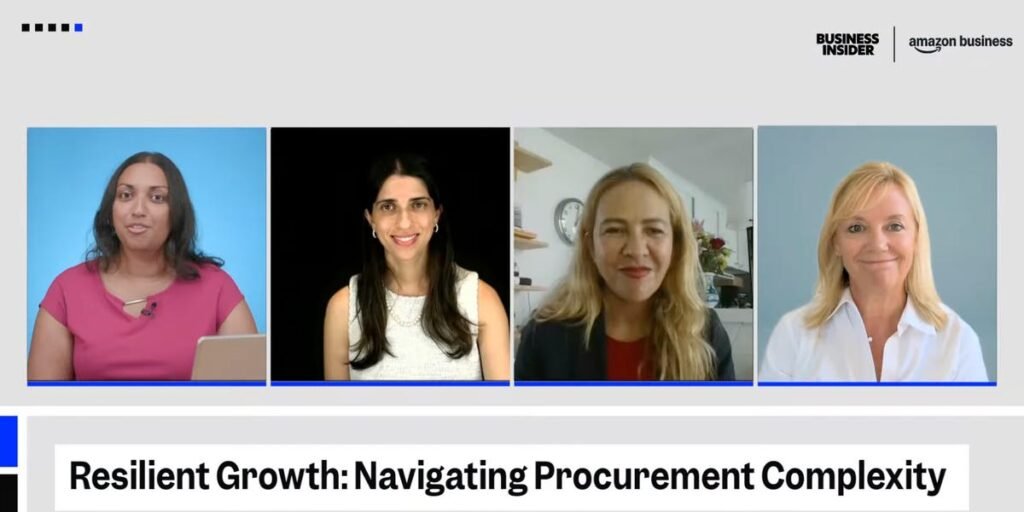Procurement is an integral function within companies, but today’s global supply landscape demands that it go beyond its traditional cost-cutting mandate to be a strategic partner.
“Resilient Growth: Navigating Procurement Complexity,” a virtual event presented by Amazon Business, gathered leaders across industries to discuss different factors impacting today’s procurement departments — and how data and AI play a role in its future.
Speakers included Sandhya Dhir, head of new solution development at Amazon Business; Paula Glickenhaus, chief procurement officer at Bristol Myers Squibb; and Sheila Gundersen, managing director of global procurement and sourcing at SMBC Americas.
The event was moderated by Shefali Kapadia, a contributor to Business Insider.
Not surprisingly, all panelists agreed that AI is playing a role in how procurement departments are servicing the rest of the company.
“AI is here to stay,” Bristol Myers Squibb’s Glickenhaus said. “In the past year, there’s been a rapid surge of AI solutions and also an interest from stakeholders to understand how procurement can use AI to differentiate how we service the business, how we give them faster solutions, how we provide analytics forward.”
Dhir said one of the opportunities she sees for AI in procurement is to help with inefficient manual workflows or approval chains that result in bottlenecks and oversight.
“AI can auto adapt to, or learn, each client’s data and assign tasks within a workflow based on capacity or priority and internal resources,” Amazon Business’ Dhir said. “Workflows can automatically adapt based on user metrics and potential inefficiencies. And then on top of that, a solution can also leverage Gen AI and create guidance for resolutions such as recommendations of actions.”
She said when she’s doing a task more than once, that’s when she starts looking for AI solutions. She also said it’s important to build in additional time at first when establishing an AI workflow. “Expect it to take longer at first as you figure out the right prompts or the right tool or even create the mechanism,” Dhir said.
From reactive response to proactive planning
Traditionally, procurement has focused on risk and reactive planning when it comes to supplier relationships, but that is shifting, Gundersen said.
“We have definitely transitioned to figuring out how to be more proactive, what tools and capabilities there are— whether it’s from AI and/or other ongoing monitoring tools,” Gunderson said. “So definitely being able to build that into the supply chain management, risk management function is important. I think that’s where everybody is moving and trending.”
A big part of that transition is due to the data that is available to collect and analyze, SMBC’s Glickenhaus said.
Glickenhaus cited recent earthquakes and tsunamis as an example of how things have shifted. In the past, they would need hours to analyze data and react to how it might affect the supply chain. But with the systems and data available now, that time is significantly reduced and they can be more proactive about solutions.
“It’s helping procurement to have a better positioning in companies as a gatherer of data and then being able to analyze this data and provide this analysis to senior leaders so that they can make the right decisions,” she said.
That access to data and its analysis is ultimately what proves procurement’s value to the rest of the organization.
“What I’m most excited about is this interconnection between procurement and data utilization,” Dhir said. “It’s a combination of actively partnering and supporting our clients and our customers, leveraging all the different solutions that we can provide.”
Read the full article here

















